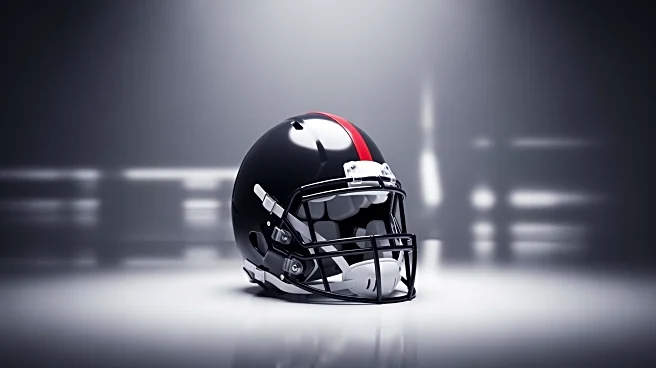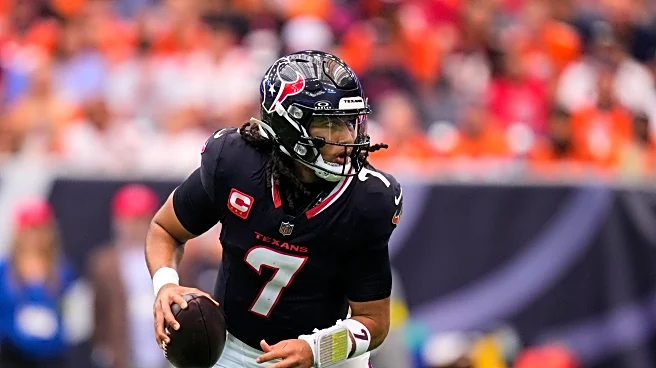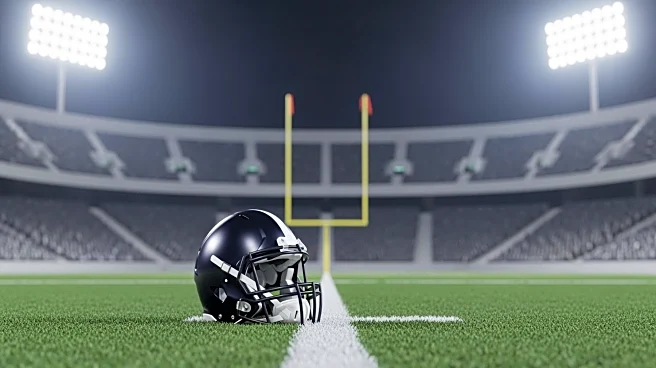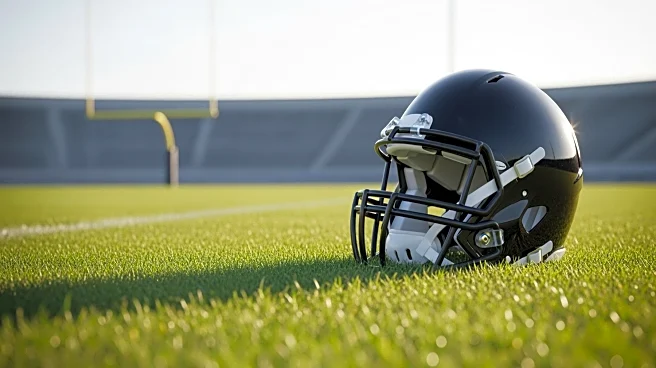What's Happening?
Houston Texans quarterback C.J. Stroud was forced to leave the game against the Denver Broncos after sustaining a concussion. The incident occurred during the second quarter when Stroud was hit on the shoulder by Broncos cornerback Kris Abrams-Draine
while sliding at the end of a six-yard run. The impact caused Stroud's head to hit the ground violently. Initially, Abrams-Draine was penalized for unnecessary roughness, but the call was overturned upon review as officials determined there was no contact with Stroud's head or neck. Stroud was attended to by medical staff on the field before walking to the sideline and entering the medical tent. He was later taken to the locker room for further evaluation, and his return to the game was deemed questionable. Before his exit, Stroud had completed 6 of 10 passes for 79 yards and had two scrambles for 12 yards.
Why It's Important?
C.J. Stroud's injury is significant for the Houston Texans as he is a key player in their offensive lineup. His absence could impact the team's performance, especially considering his recent strong showing against the San Francisco 49ers, where he threw for 318 yards. The Texans will need to rely on backup quarterback Davis Mills, which could affect their strategy and effectiveness on the field. This incident also highlights ongoing concerns about player safety in the NFL, particularly regarding hits to the head and the risk of concussions. The league has been under scrutiny to improve safety protocols and reduce head injuries, making this case a point of interest for both the NFL and its stakeholders.
What's Next?
The Texans will monitor C.J. Stroud's recovery closely, as concussion protocols require a player to be symptom-free and cleared by medical professionals before returning to play. The team will likely provide updates on his condition in the coming days. Meanwhile, Davis Mills will assume the starting quarterback role, and the Texans may need to adjust their game plan accordingly. The NFL may also review the incident to ensure that the correct procedures were followed and to assess any potential need for rule changes or additional safety measures.















